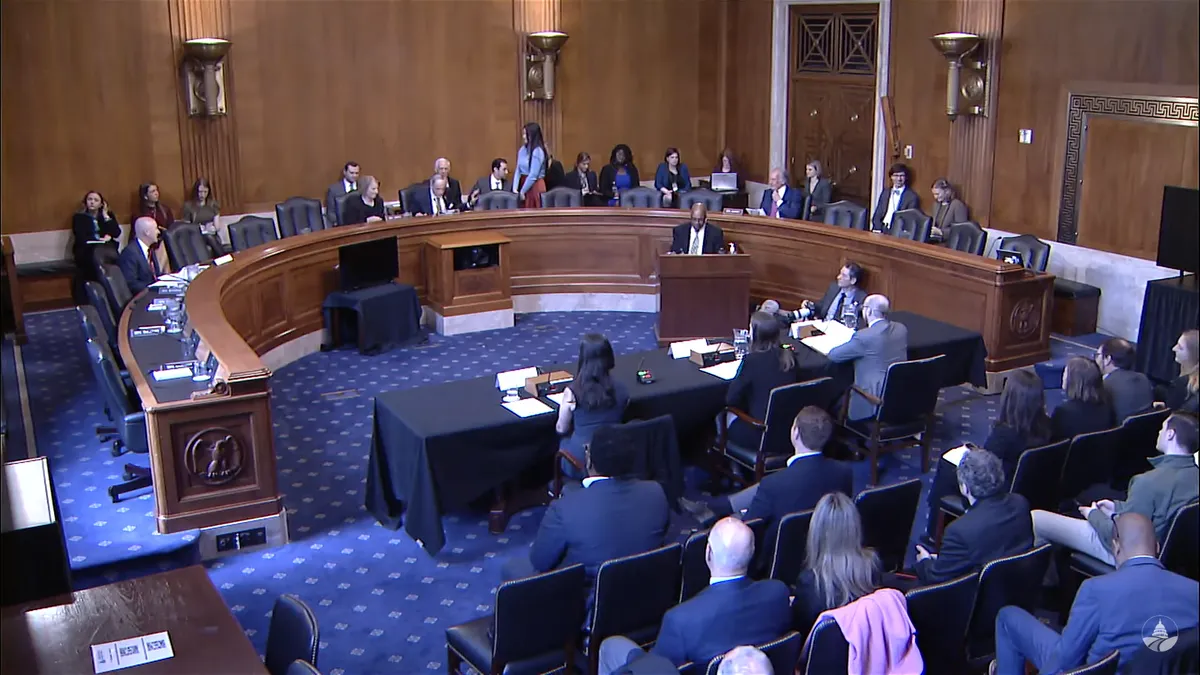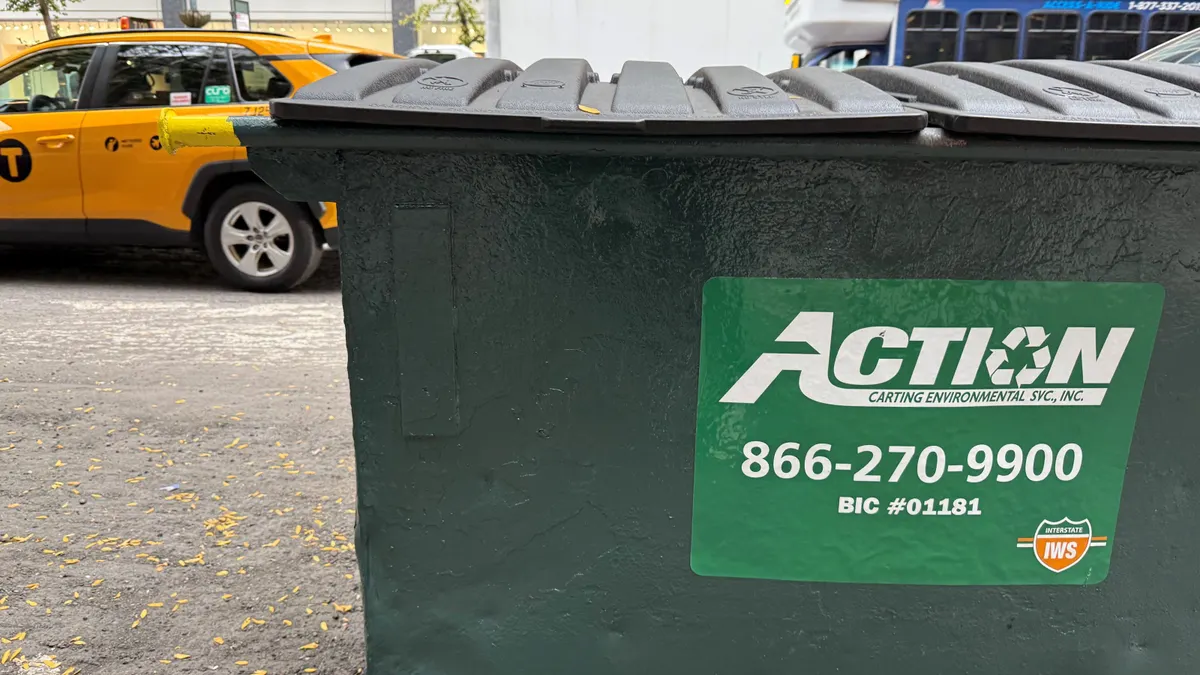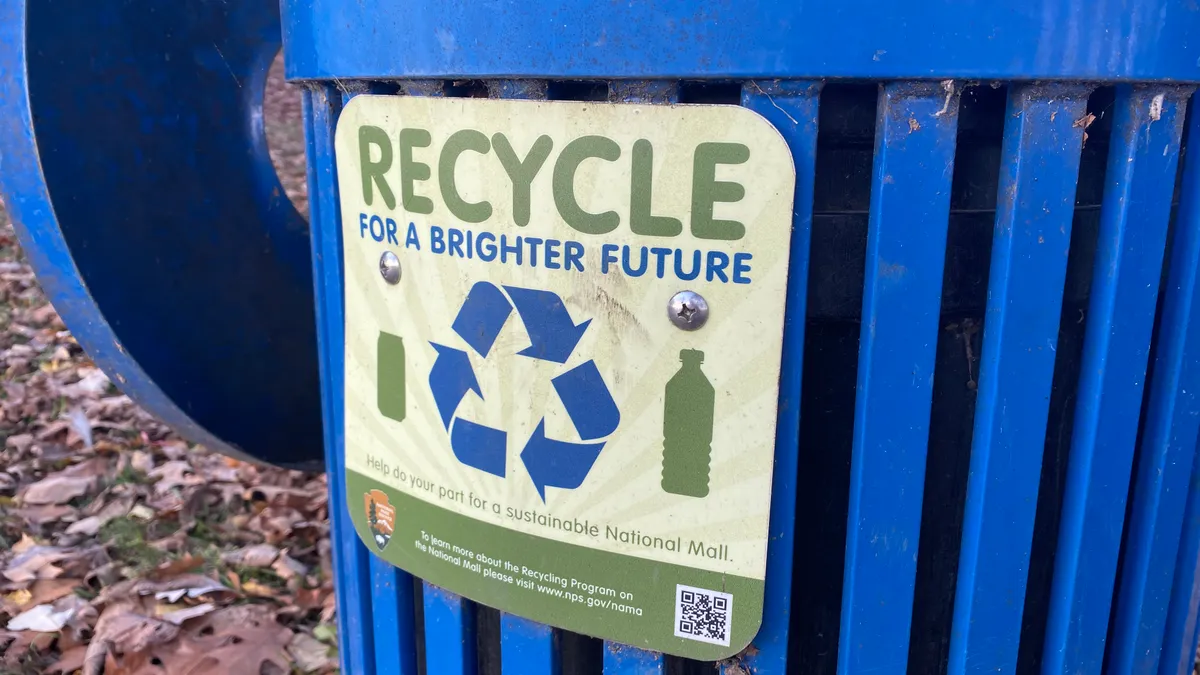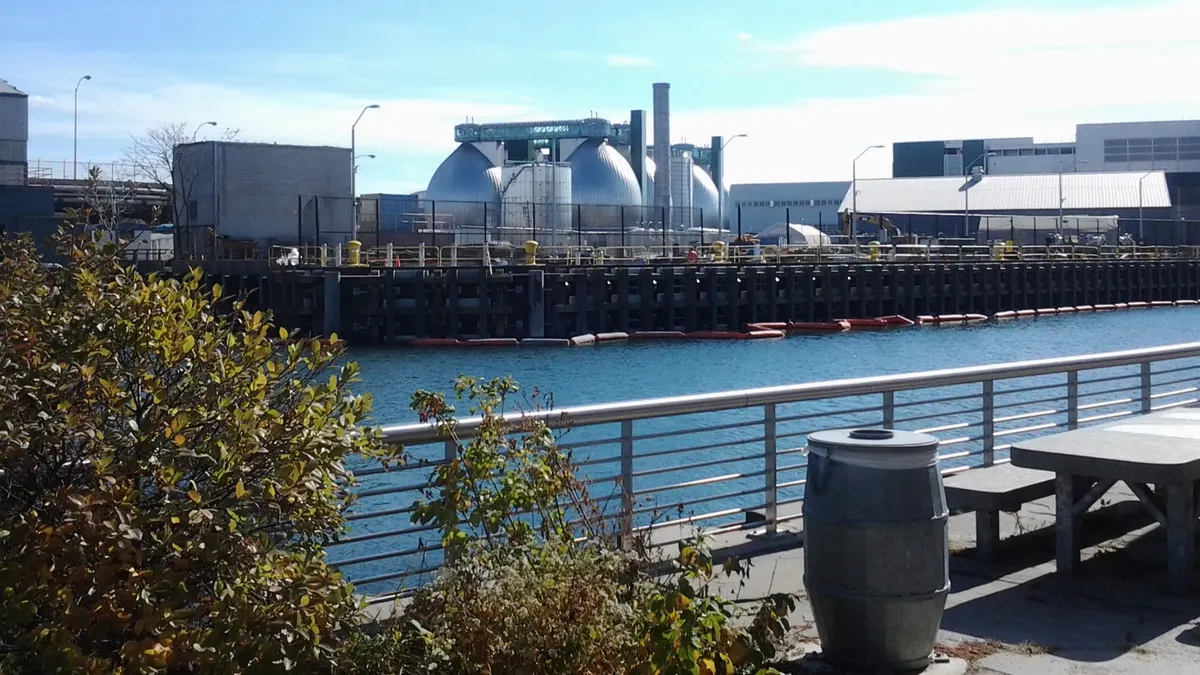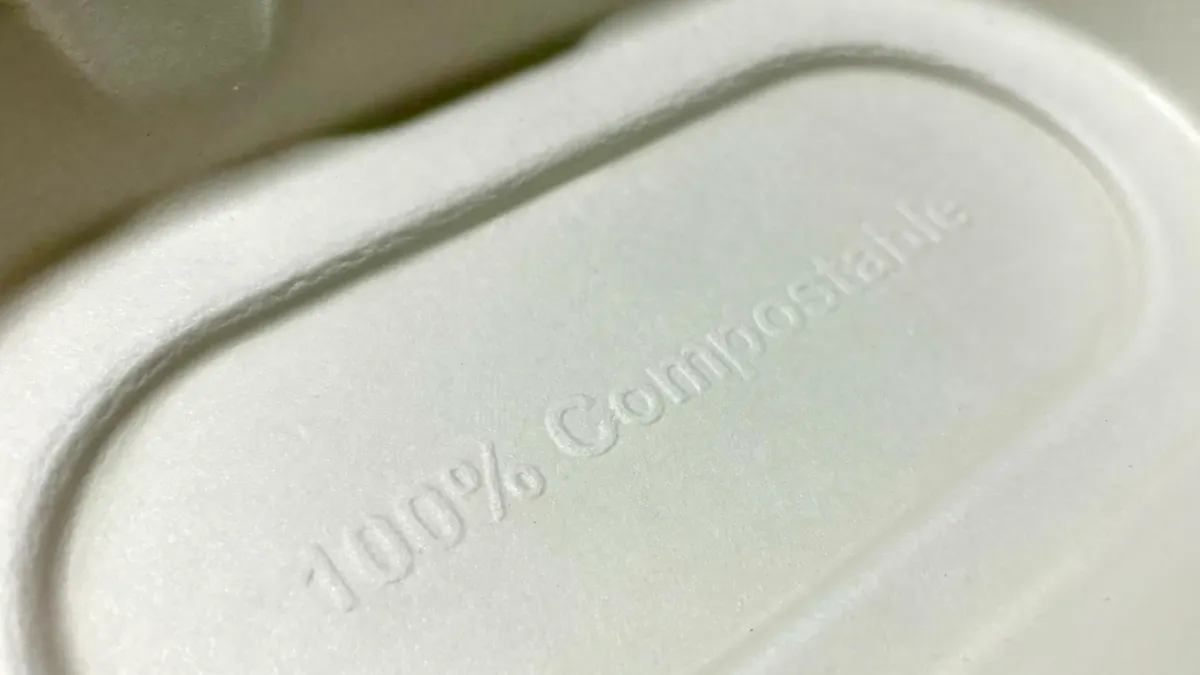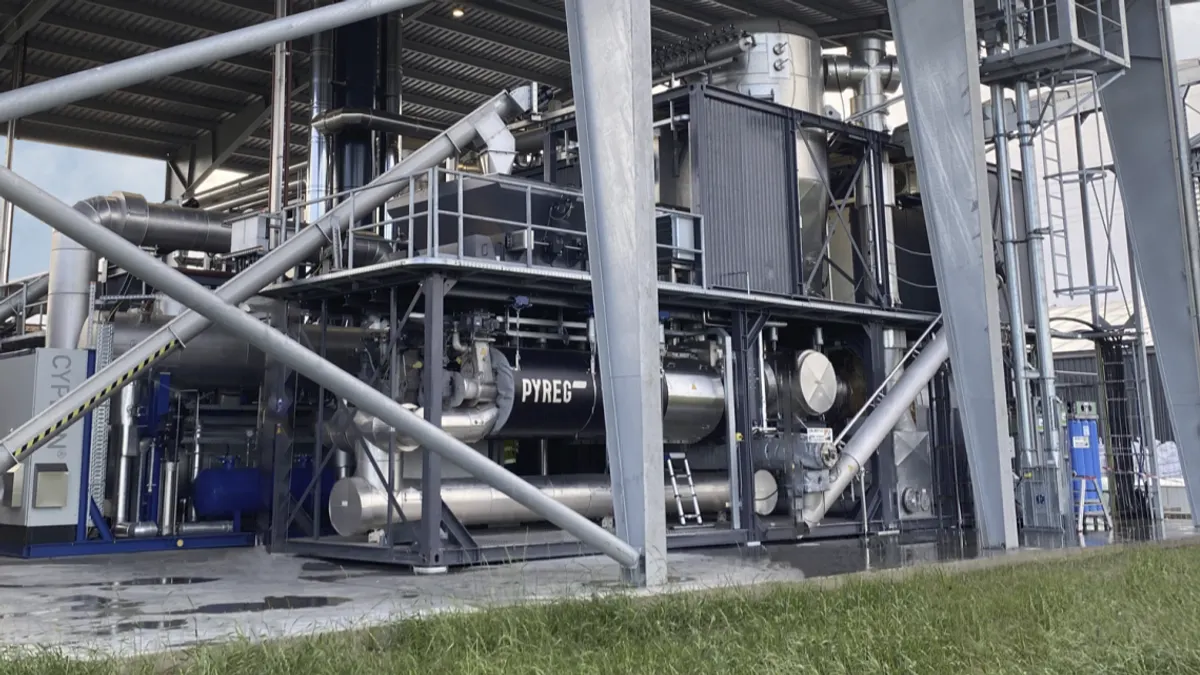Witnesses at a Senate Committee on Environment & Public Works hearing on Wednesday called on the federal government to ramp up its support for landfill emissions monitoring and mitigation efforts, noting regulators are facing a series of deadlines to reduce methane.
Committee Chair Tom Carper, D-Del., said the waste sector needs to deploy “innovative methods” to address methane, a greenhouse gas about 80 times more potent than carbon dioxide within a 20-year time frame.
“Landfills and their emissions are largely out of sight, they are largely out of mind for most people. However, landfill methane emissions are the third — that’s right, the third — largest source of methane emissions in the United States and globally,” Carper said.
While other industries have been slow to tackle their methane emissions, landfill operators have worked to reduce air emissions by 45% since 1990 even as waste volumes have grown by 5%, Anne Germain, chief operating officer and senior vice president of regulatory affairs at the National Waste & Recycling Association, said at the hearing.
"We are proud of this progress, and we are not aware of any industry that has achieved anywhere near those improvements," Germain said, noting that sectors like oil and gas have also benefited from much greater financial assistance from the federal government.
But the waste industry is facing additional milestones as the federal government looks to meet the voluntary Global Methane Pledge, which commits signatory countries to reducing methane emissions by 30% from 2020 levels by 2030. Getting there will require action from landfills, which the Biden administration acknowledged in its U.S. Methane Emissions Reduction Action Plan.
After publishing the plan in 2021, the administration expanded the number of landfills covered by existing emissions regulations. It also leaned on commitments like the voluntary Landfill Methane Outreach Program in an effort to increase all U.S. landfills’ gas capture and flare rate by 12%. But Tom Frankiewicz, a principal at RMI, told Carper the Senate should encourage EPA to ratchet up requirements for landfills. The U.S. EPA is scheduled to update New Source Performance Standards and Emissions Guidelines for landfills under the Clean Air Act later this year.
“Since 2016, the last update of the New Source Performance Standards for landfill gas, the technology has advanced rapidly,” Frankiewicz said. “We're already collaborating with the waste industry in identifying these solutions, and we'd like to see EPA join us.”
The 2016 update to the NSPS wasn’t enforced until 2021, as the Biden administration ended a delay that occurred during the Trump administration. Ranking Member Shelley Moore Capito, R-W.Va., pushed back on Biden’s tougher regulatory approach, including its tightening of rules under the Clean Air Act and New Source Review program.
“In considering solutions to address landfill methane that benefit the environment and economic development, it is essential that any regulations are achievable and that incentives are targeted,” Capito said.
Methane leaks pose the greatest challenge in addressing emissions, an issue that satellite monitoring organization Carbon Mapper tracks. In its survey of about 300 landfills nationwide, the group found large amounts of emissions at over 200 sites, research scientist and waste lead Tia Scarpelli said at the hearing.
Scarpelli said much of the fugitive emissions come from the working face of a landfill, where covers are often inefficient and operators typically have not yet installed gas capture systems. The gas collection and control systems themselves, as well as tears in intermediate and long-term covers, can also lead to fugitive emissions plumes.
Advanced monitoring techniques like Carbon Mapper's satellite-based technology are a "critical tool" to guide mitigation efforts, Scarpelli said.
"Remote sensing technologies are making methane emissions visible and can help the waste sector identify large emissions sources, improve emissions estimates and support cost-effective emissions management to minimize methane loss in the first place," she said.
Sen. Sheldon Whitehouse, D.-R.I., agreed the EPA should take a stronger stance on landfill emissions. Citing research from the Environmental Defense Fund, he said the EPA has “systematically undercounted methane leaks for a very long time” and said the agency needed to work with the private sector to begin monitoring landfills in a more organized fashion.
”EPA having done this poorly for a very long time, it's my understanding [the agency] has no direct contractual relationship with any satellite providing entity so that it can deploy its efforts when a large methane leak appears, which is to me a little bit like the fire department not tracking where smoke is pouring out of buildings and going to respond to the problem,” Whitehouse said. “I just don't know why that hasn't happened yet.”
The witnesses cautioned, however, that satellite monitoring should be used in tandem with both waste prevention strategies and on-the-ground monitoring techniques for maximum effectiveness.
Frankiewicz said automated well tuning could improve landfill gas capture by 10% to 20%, and he said the resulting increased revenue means the upgrade could pay for itself in a year. He also noted the importance of reducing the amount of organics sent to landfills.
"We really look at organics diversion and landfill gas control as being a two-pronged approach," Frankiewicz said. "You're basically working upstream and downstream to reduce landfill gas emissions."
Sen. Ed Markey, D-Mass., noted that his home state has seen success in recent years with a regulation requiring businesses and organizations that generate over half a ton of food waste weekly to divert those organics from disposal.
"The ban has not only reduced greenhouse gas emissions but also saved space by keeping millions of pounds of food out of landfills," Markey said.
Other states have enacted similar legislation. Most recently, Maryland began requiring generators of 2 tons of food waste weekly to divert the material this year, and New York's state Department of Environmental Conservation has also indicated it would like to expand the state's diversion law for organics waste generators.
In states where they are required to, like California, waste haulers have adopted practices to separate organics and divert them to beneficial use. But Germain noted that current organics recycling infrastructure is limited and faces challenges from contamination.
“There's just not enough of them to be able to take all of the potentially diverted material,” Germain said. “We need to focus on what we can do to improve that infrastructure, and also to focus on the quality of the materials.”
To address this, the NWRA is pushing EPA to require field testing of any packaging that would advertise compostability, rather than just lab testing as is currently required, Germain said.
Frankiewicz praised Maryland's example for tackling landfill methane, as the state has also increased the stringency of its landfill methane rules in tandem with organics diversion.
"While some states have shown leadership in moving forward on these programs, not all have," Frankiewicz said. "That's where you really need strong federal standards, both for increased landfill gas control ... but also, there's more that the federal government can do to support organics diversion and treatment. That's where you see many of the greatest community benefits as well."



